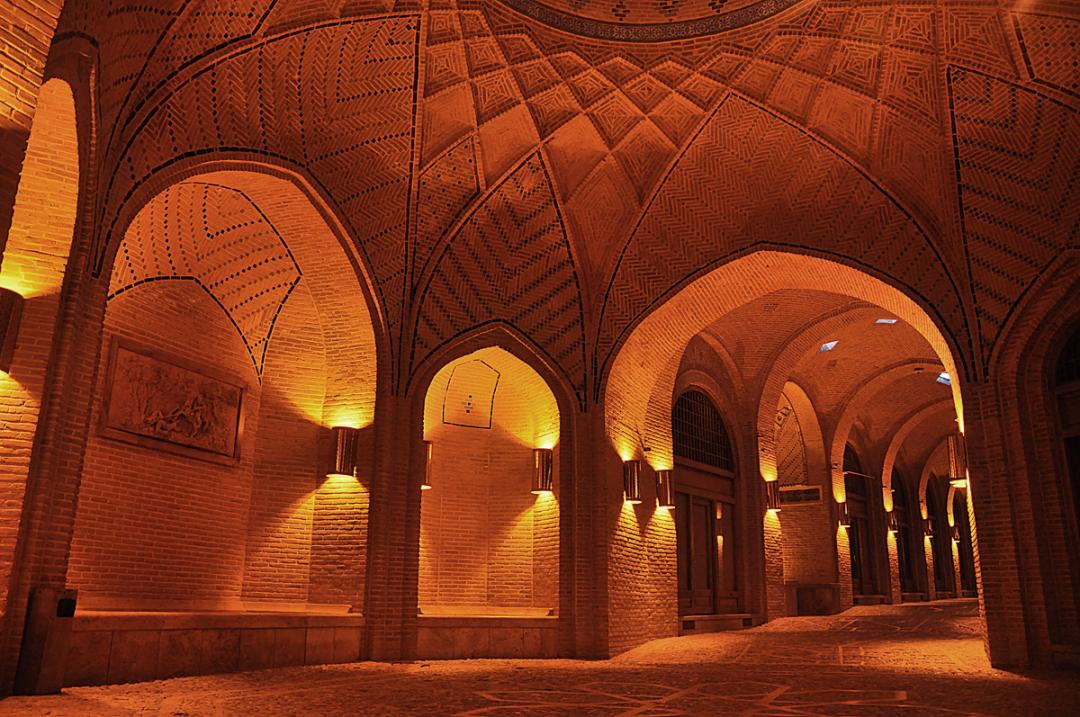It would be a pity to visit Qazvin Province without seeing the Sa’d-ol-Saltaneh Caravansary.Sa’d-ol-Saltaneh Caravansary in Qazvin, capital of Qazvin Province, is one of the largest and well preserved caravansaries in Iran. It is in fact the largest indoor caravansary in the world, as well as the largest urban caravansary in Iran; that is, one situated within a city.
Covering an area of 6.2 hectares, the caravansary was constructed in the Qajar Era during the reign of Nasser al-Din Shah (1831 – 1896), under the supervision of Mohammad-Bagher Sa’d-ol-Saltaneh, the erstwhile governor of Qazvin. The governor built this 400-chamber establishment to accommodate merchants trading between Iran, Russia, and the Ottoman Empire, according to safarnevis.com.
The caravansary is built on a square plan with four porticos facing a huge courtyard. At the southern end of the yard, the caravansary ends with commercial chambers. It is a complex that includes bathhouses, a bazaar, a mosque, a camel stable, and a tea-house. Two Isfahani and two Qazvini architects worked on the project and brought it to completion.
The caravansary served as a linking bridge between Europe and Asia, but lost its prominence after World War I when the Russian government underwent political changes. Chambers and sections of the caravansary changed their functionality. They were turned into warehouses, flooring factories, raisin factories, as well as sawmills and workshops producing shoes, and carpets, among others.
Once bankrupt, it is said that the wood industry moguls of Qazvin set fire to the caravansary to claim insurance.
Features
A beautiful vestibule connects the main entrance to the main courtyard, surrounded with chambers shaded under little verandas. There are also a number of chambers which were once used as lodging for travelers. They are on a platform one meter above the courtyard.
On the hallway behind the southern balcony, the building has a large dome in the middle of four smaller domes decorated with striking tile-work. The east-west axis of the hallway is called Dalan-Gheysarieh (Caesar’s Hall); the north-south axis is called Dalan-Ghahremani (Heroes Hall). The latter is connected to Sara-e Vazir (Vizier’s Hall), a two-story building with a vast courtyard. Particularly noteworthy features of the building include the wooden doors and tile-works.
There are also two smaller courtyards in the east and west of the caravansary. The Sa’dieh bathhouse and a large warehouse are located behind the eastern chambers.
In 1999 the caravansary was purchased by Iran’s Cultural Heritage, Handicrafts and Tourism Organization (ICHHTO), and the provincial ICHHTO restored the complex to its current presentable state.


